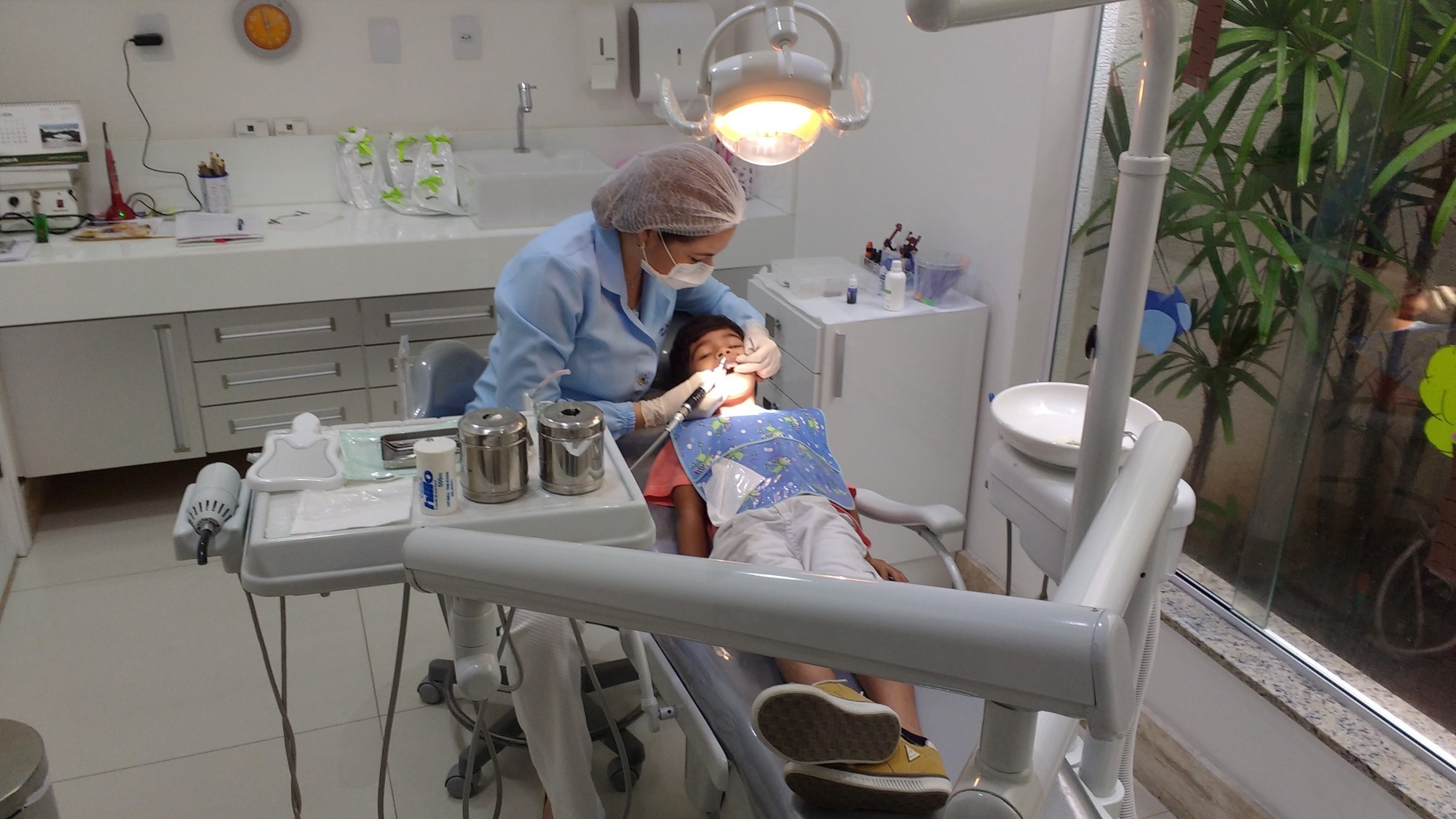by Dr. Patrick Cassidy & Eddie Stephens
Seth Godin talks perspective in his book, Linchpin. And in principle perspective can help you navigate the ever evolving narrative about Private solo or group dentistry, and Corporate solo or group dentistry.
Godin shares the story of a first-class train passenger traveling through Spain. He has the good fortune of being seated next to the famous artist, Pablo Picasso.
The traveler takes advantage of his fortunate moment with the great Picasso. He asks, “Señor Picasso, you are a great artist, but why is all your art, all modern art, so screwed up? Why don’t you paint reality instead of these distortions?”
Picasso pauses then asks his traveling companion, “So what do you think reality looks like?” The man removes a picture of his wife from his wallet saying, “Here, like this. It’s my wife.”
Picasso holds the photo, looks at it, and grins. “Really? She’s very small. And flat, too.”
Define Your Future in Dentistry
If ever perspective matters, it’s now! Your future as dental professional will be defined by your viewpoint relative to the alternatives available to you.
The debate is real. The choices aren’t always easy.
“After speaking with thousands of dentists from around the country, it’s clear to everyone now that the Private Practice vs Corporate Dentistry topic is…a real issue with serious consequences for the unprepared.”
The greater reality is deciding what model is best for you, your team(s), and your patient care philosophy.
Private Practice Dentistry Model?
Corporate Practice Dentistry (Including DSO) Model? (Non-dentist owned and/or controlled.)
The good news: you have choices in today’s world of practicing dentistry. And your decision can determine the next five, 10, 20 or more years of your dental career.
There are layers to each model that present a variety of thought-provoking considerations.
Let’s briefly review each.
The Evolution and Opportunities of the Private Dental Practice
Private practice dentistry has dominated practice structure for many years, and it still remains the most common model for new and established dentists.
Even so, the model’s avatar has changed and continues to evolve. Consider these pivot points as you explore this model, consider changing your dental practice model, and/or compare with Corporate Dentistry.
Ultimately, solo private practice dentistry provides the highest level of independence possible in dentistry – which can be a blessing – or a curse.
You get to make all the decisions which is great until you realize that that level of authority and responsibility can be overwhelming with administrative staff oversight, property management, clinical staff oversight, providing clinical care to your patients, and financial/business/legal responsibilities.
Add to that you will be on call 24/7 for your patients, and have no colleague immediately available in your practice to discuss diagnostic, clinical, and patient management issues.
Still, despite all these potential drawbacks, dentists, being generally independent and somewhat perfectionistic, prefer to run their own show. However, not all solo, private practice dentists have the business savvy to patiently or strategically maneuver outside of their clinical expertise.
Private practice dentistry can reach beyond one practice, and beyond one practitioner. For example, a satellite practice could expand your reach within a city or more commonly in adjoining rural areas).
”Group Practice is an umbrella term that describes a number of scenarios, from a partnership of two or more dentists, to large multi-state organizations. The practice might have multiple dentists working at a single location, or several locations, each with a dentist serving as leader of the team. In some cases the dentists work as employees, while in others there is an opportunity to buy into the practice and take a partial ownership position.”
Private group practice with only 2 owners. Beware of 50/50 partnerships. In most businesses to be successful there must be only one person “at the top” who, when all else fails, has the power to make the final decision. Do not be fooled by the fallacy that because you got along with a dental school classmate, that you will be successful in a 50/50 partnership. Two graduates, most probably with NO business experience, have very slim chances of long term success in a 50/50 partnership. Let’s fire her! No, let’s give her a raise, she is my favorite!
Single location large private group or multi-group private practices. Larger groups have the singular advantage of economies of scale. For instance responsibilities can be departmentalized for efficiency, product purchasing power is enhanced (ex: can raise more capital and purchase expensive shared equipment), ability to be open extended hours and days, limited on call hours for providers, etc., etc. One of the biggest advantages is stronger marketing power versus limited resources of solo practices. Dentist positions can be owner(s), employee(s), or independent contractor(s). Advantages and disadvantages of these positions will be discussed in further articles.
As a private group practice owner you may have the opportunity as the practice grows to reduce your clinical hours and devote more time to leadership responsibilities that are more related to driving the long term vision of the business and clinical practice.
And finally…
The Support-Culture and Appeal of Corporate Dentistry
For our purposes the following defines and clarifies the corporate dental practice model.
“Corporate dentistry refers to any of a variety of practice modalities in which management services, at a minimum, are provided in a manner that is organizationally distinct from the scope of activities performed by a dentist within only his or her practice. Depending upon the model, dental management companies, dental service organizations (DSO), management service organizations, and/or dental management service organizations (DMSO) provide or administer management services.”
It’s essential to understand that corporate dentistry presents numerous opportunities. The underlying value is “support.”
The most common term used in the corporate dentistry narrative is DSO. For clarification (and as you’re perhaps aware), DSOs (Dental Service Organizations) provide independent business support in contract with dental practices. They deliver business management and non-clinical operational support. Current DSO networks range in size from four to over 900 practices.
DSOs that often come to mind include:
Their selling-point: a DSO handles the business of dentistry so you (the dentist) have less managerial distraction from doing what you love to do – diagnose and treat patients.
”The DSO model certainly has its advantages. Often enabling smaller dental practices the opportunity to use modern technology to provide high quality care to patients. And while it’s a model that has been catching on, the American Dental Association Health Policy Institute indicates that 7.4 percent of all practicing U.S. dentists are affiliated with DSOs.”
Are you a new dentist?
”There’s a trend afoot particularly where new dentists are concerned. The American Dental Association says that 16.3 percent of all new dentists ages 21-34 are affiliated with dental service organizations—more than twice the overall percentage of 7.4.”
Corporate dentistry promises what some believe to be a more profitable, sustainable, and scalable future. With the hope of off-loading the business burden you might feel more inclined to sell your practice (and your future) to a DSO.
The decision gives you a perceived more comfortable transition from the daily tasks of running a practice.
You can treat patients without the direct hassle of being solely responsible for practice management details.
You can position yourself and your practice for your eventual retirement or other compelling opportunities.
The Decision is Yours
Age, physical health, retirement planning, legacy – each and more can factor into your thoughts about a particular practice model.
And the longer you practice the more sustainability becomes an issue. I
Whatever model you choose now or in the near or distant future ask yourself:
Will it sustain your philosophy and standard of patient care?
Will it sustain the individual and collective practice culture you and your team(s) value?
Will it sustain profitability now and for your eventual retirement?
Perhaps the beauty in today’s practice of dentistry is that you have more than one model to choose from.
Evaluate each dental practice model and the opportunity each presents.
Energize yourself and then your team(s) around the necessary decisions required for sustained patient care and practice success.
Envision your future as the result of your consistent, sustainable effort rather than the easy path of least resistance.
In essence, let no one define your future except YOU!
That gives you the freedom to make the choice that benefits you, your team(s), and the patients who trust you for their dental care.
Stay tuned for more on the various practice opportunities in dentistry that are evolving very quickly in the USA and world wide.
Footnote:
Seth Godin, Linchpin-Are You Indispensable?, p2.
https://www.ada.org/en/publications/new-dentist-news/december-2013/working-for-a-group-practice
https://www.cda.org/news-events/cda-explains-new-ada-classifications-of-dental-group-practices
https://www.beckersdental.com/lists/33238-15-dental-service-organizations-to-know.html
https://www.dmdtoday.com/news/weighing-the-pros-and-cons-of-dental-service-organizations
https://www.dmdtoday.com/news/weighing-the-pros-and-cons-of-dental-service-organizations
Dr. Patrick Cassidy
Dr. Patrick Cassidy is a dental graduate of the University of British Columbia, and holds a Masters of Public Health from the University of North Carolina. He is the founder of Research Triangle Dental and Implant Center in North Carolina where he contributes his 30+ years of dental knowledge. Dr. Cassidy’s innovation and creativity co-founded Net32, Inc., a dental industry leading comparison shopping.
More Posts – Website – LinkedIn – Google Plus









